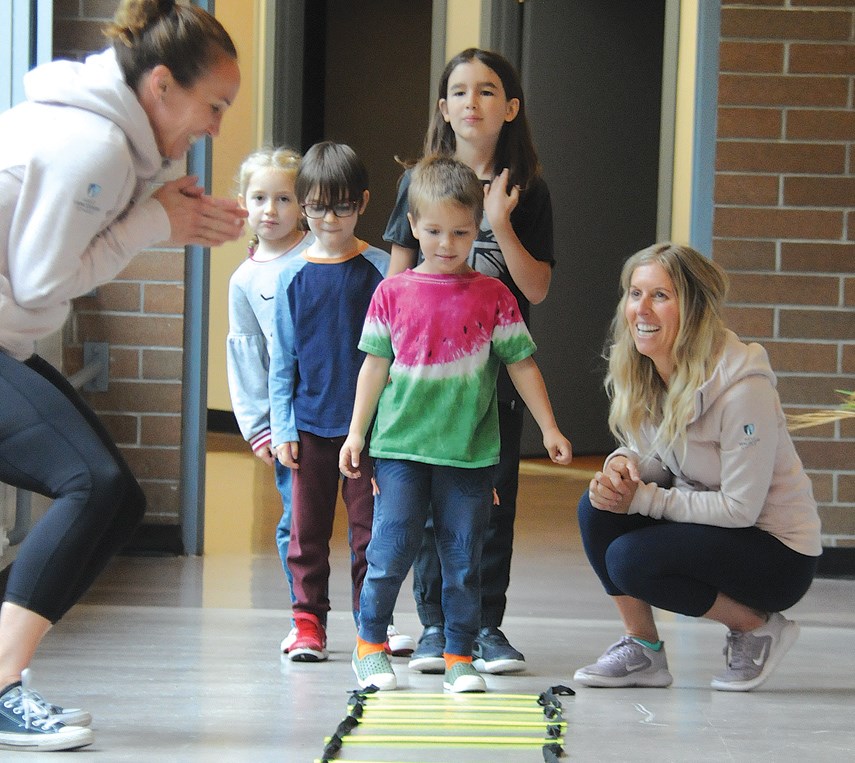Playing hopscotch, swinging from monkey bars at recess and kicking a ball around the field used to be everyday activities for kids.
But today, children who are scheduled, protected by their parents and spend hours in front of screens aren’t training their bodies – or their brains – in the same way.
“In our generation you’d probably go out in the beginning of the day and cover 10 kilometres or 10,000 steps (by the end of the day), said Diane Nelson, director of instruction with the West Vancouver School District. “If you fast forward to this generation you’d be lucky to get 200 steps. The reduction in amount of movement that kids are getting today is drastic.”
The reasons for the change are varied, said Nelson. Some of it has to do with a different type of parenting that is overly focused on safety.
“We’re kind of bubble wrapping the kids and keeping them safe,” she said. “How many kids are walking to school, biking to school, skateboarding to school? We don’t see it anymore.”
While health guidelines say kids should get at least 60 minutes of exercise daily, very few children are getting that, said Nelson. According to statistics gathered by Vancouver Coastal Health, only between 15 and 17 per cent of youth in North and West Vancouver are meeting that goal every day.
Besides the sedentary behaviour being modelled by adults, and too much time in front of screens, Nelson said educators in West Vancouver have recently begun to focus on another reason kids aren’t more active – they don’t know how. Three years ago, the West Vancouver School District tested that theory by assessing students in primary grades on how well they completed five basic skills: running, hopping, throwing, kicking a ball and walking backwards heel-to-toe. The results were staggering. Out of 1,580 students tested, only 13 could do all five tasks competently.
That’s when West Vancouver put a plan in place to teach kids those basic movement skills, a concept known as “physical literacy.”
In some classrooms, that means kids walking through “agility ladders” on the floor. In others it’s involved throwing balls against a target. By teaching kids – instead of assuming they already know how to do it – students learn simple skills that will allow them to gain confidence, said Nelson.
In just one year, students who were taught the skills improved so that 65 per cent were able to complete all tasks. That’s important in students’ willingness to participate in physical activity later in their schooling, said Nelson.
Historically, for instance, most girls aren’t even willing to attempt to throw a ball by the time they’re in Grade 4. “Why shouldn’t they be able to throw a ball?” said Nelson. “They don’t have those fundamental skills to allow them to make choices.”
Getting kids up to speed on basic skills and encouraging them to take some risks is important for both physical wellbeing and for brain performance, she added. When you move, “the brain lights up and there’s an impact cognitively,” she said.
It’s a message the school district is taking to parents as well in a forum next month focusing on “risky” play.
“There’s nothing to fear in allowing your kids to get out there,” said Nelson. “We want them to walk on logs. We want to teach them how to take a bit of risk, teach them how to fall.”



